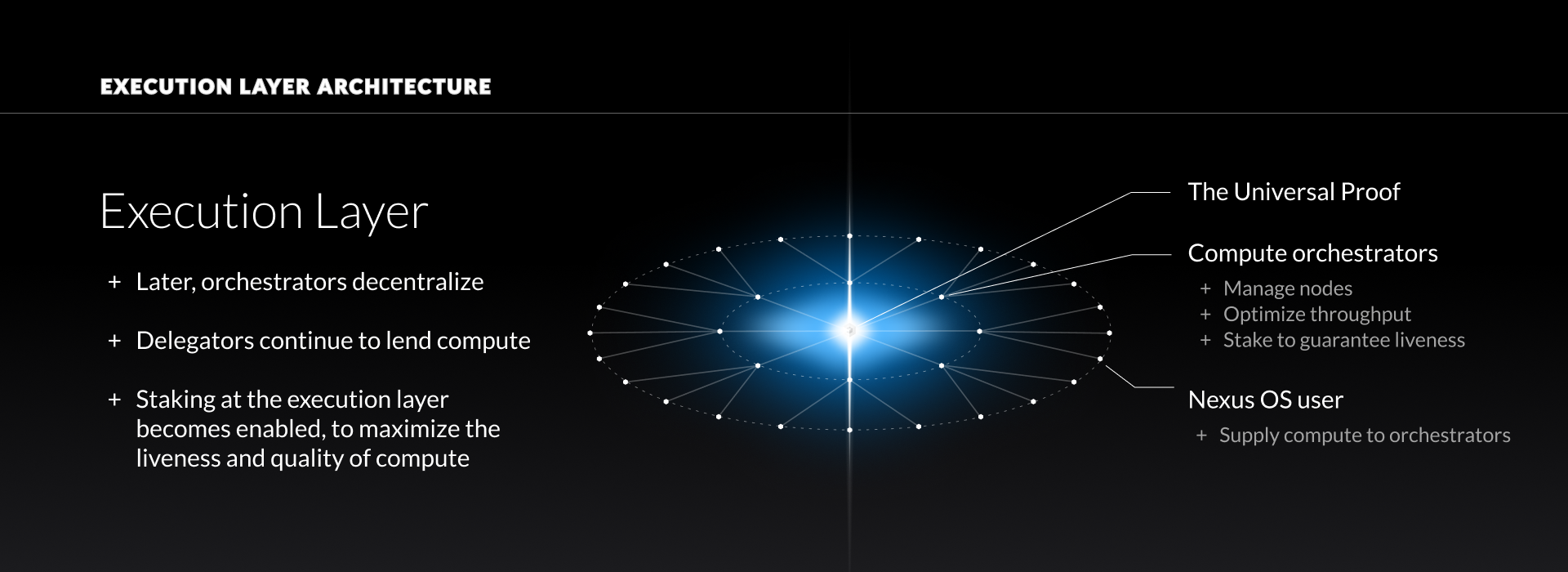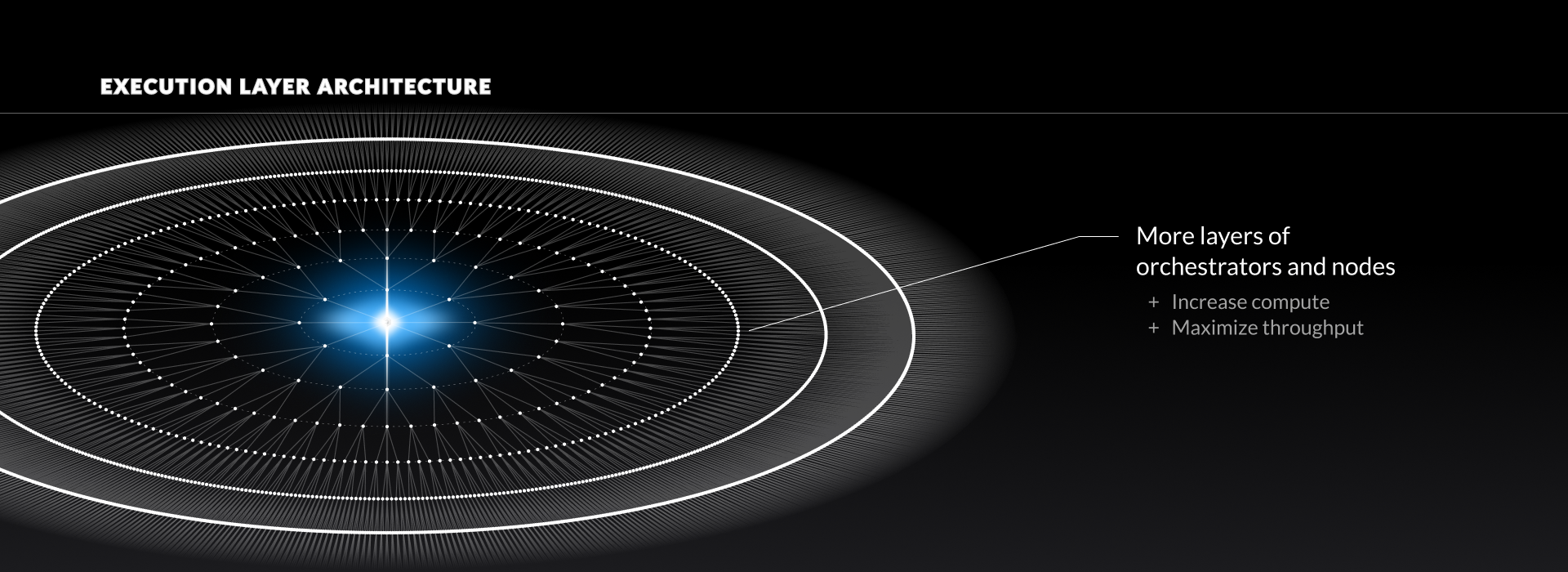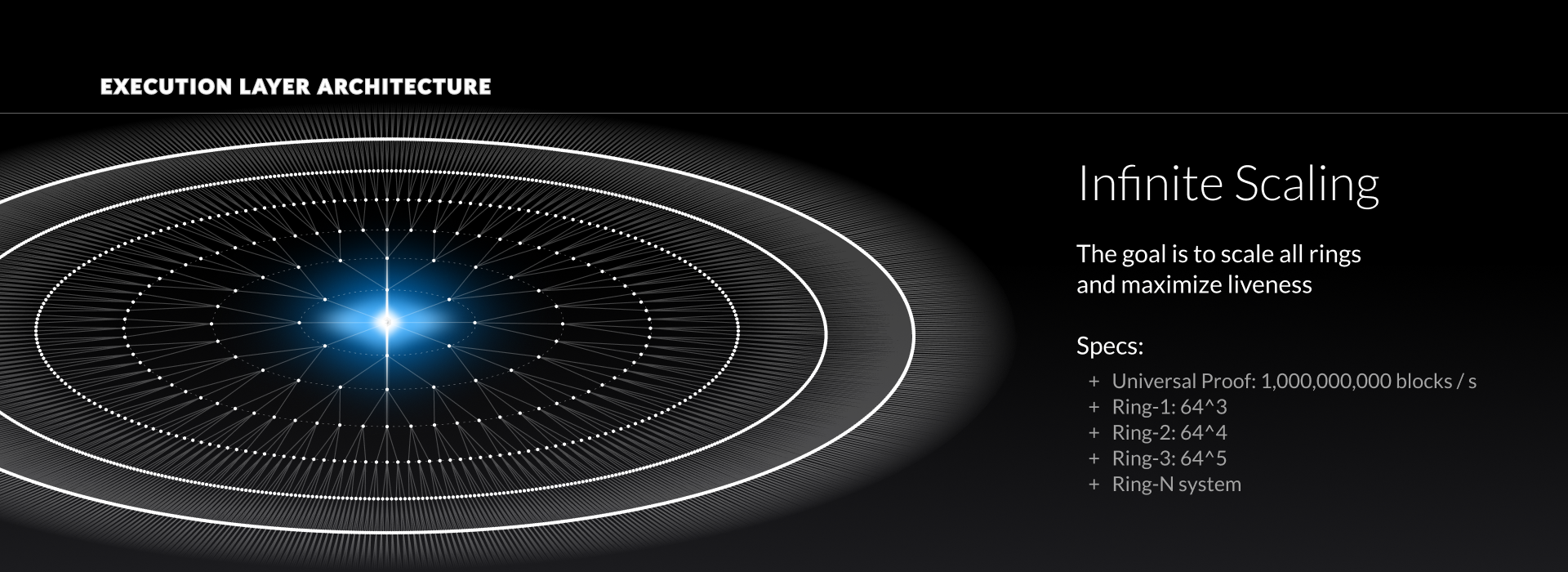Exponential Episode 18: Public Privacy
In this episode of Exponential, Aisling Connolly, Chief Strategy Officer at TACEO, joins the show to unpack the deeper technical

At Nexus, we’re building a world supercomputer — one capable of proving billions of computations per second. The reason? We need to fundamentally rethink blockchain infrastructure to prepare for the AI age.
The Nexus L1 is built for ultra-high performance. It’s also built for access: anyone, anywhere can connect and contribute directly in just one click. This combo of simplicity and performance is made possible by the unique architecture of the Layer 1’s Execution Layer. Together the system is designed as a silent engine driving the next era of the Internet: trustless, scalable, and radically open.
Our Execution Layer is different from anything that’s ever come before: it runs a zero-knowledge virtual machine (zkVM) inside every node and orchestrates them to work together as a single unit. This setup makes it possible to concentrate compute power and condense the entire Nexus Layer 1 into a single proof: the Universal Proof.
In this post, we’ll dive into the architecture of the Execution Layer with the goal of getting a better understanding of how it enables the supercomputer to scale indefinitely — both in throughput and security.
Blockchains were never meant to be fast. Ethereum, for instance, finalizes a single block every ~15 seconds. But as demand for onchain applications explodes — everything from rollups and identity to high-frequency financial markets and agentic AI — the limiting factor of onchain computation speeds becomes unsustainable.
But we don’t just need more computation — we need provable computation. The kind that any node, anywhere, can validate without having to re-execute everything from scratch.
That’s where Nexus comes in. The Execution Layer makes the Nexus Layer 1 exponentially scalable. In fact, because of its zkVM-based design, the Layer 1 gets faster as more nodes join.

The Nexus Execution Layer is a globally distributed network designed to orchestrate and verify massive amounts of computation. Formally, it’s a new kind of supercomputing mechanism called an Incrementally Verifiable Computation (IVC) system — a network where each node runs computations through their unique instances of the zkVM, generating succinct, incrementally verifiable proofs of correctness.
Instead of one machine running everything sequentially, the Execution Layer turns the world into a cooperative computing mesh, where workloads are broken apart, processed in parallel, and reassembled through recursive proofs.
At full scale, this network will have the theoretical capacity to handle up to one billion EVM-equivalent blocks per second.

The architecture of the Execution Layer is designed for scale from day one. Here’s how it works:
The deeper the rings go, the more compute the system can handle — and the more composable the network becomes. Every additional ring increases capacity without compromising verifiability.

Scaling to a billion blocks per second isn’t marketing hype — it’s an engineered trajectory. The Execution Layer roadmap unfolds across ten well-defined phases:
Each phase introduces more decentralization, more economic incentives, and more compute throughput — while always retaining the guarantee of verifiable correctness.

The Execution Layer is more than just an infrastructure upgrade. It’s a new substrate for the Verifiable Internet — an environment where anyone, anywhere, can prove and verify computation at scale.
The Universal Proof concept captures this idea: a future where all meaningful compute flows through a common, trustless proving layer. In this world, data becomes self-certifying. Applications inherit security by default. Transparency scales with performance.
We’re not there yet — but every milestone on the Execution Layer roadmap brings us closer.
From zero-knowledge AI to digital democracies and autonomous institutions, the next generation of technologies will demand one thing above all else: trust, at speed. The Nexus Execution Layer delivers that trust — not through centralization or permission, but through math, recursion, and exponential scale.
We invite developers, researchers, and builders to join us building the Universal Proof and help us build a new kind of blockchain for the AI era.